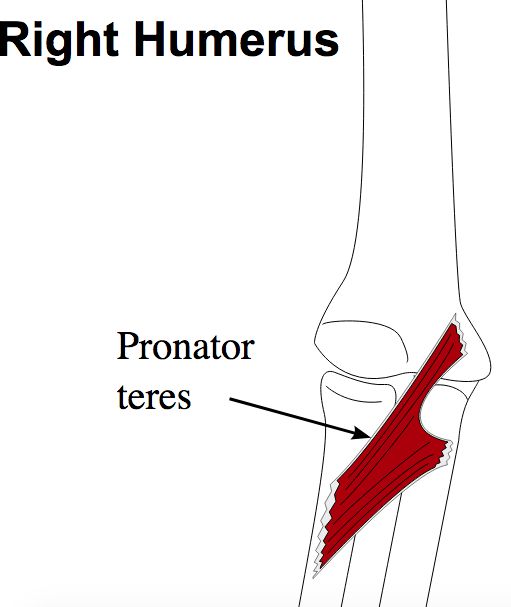Difference between revisions of "SUPERFICIAL FLEXORS OF FOREARM-PRONATOR TERES"
From NeuroRehab.wiki
(Imported from text file) |
(Imported from text file) |
||
| Line 1: | Line 1: | ||
[[Summary Article|<h5>'''SUMMARY'''</h5>]] | [[Summary Article|<h5>'''SUMMARY'''</h5>]] | ||
<br/>1. O: <i>main head - </i>medial epicondyle of humerus (common flexor origin) & | <br/>1. O: <i>main head - </i>medial epicondyle of humerus (common flexor origin) & medial supracondylar ridge. <i>Deep head - </i>medial border of the coronoid process. | ||
<br/> | <br/> 2. I: lateral convexity of radial shaft. | ||
<br/>3. NS: median n. | <br/>3. NS: median n. | ||
<br/>4. A: pronates forearm & flexes elbow. | <br/>4. A: pronates forearm & flexes elbow. | ||
Revision as of 12:45, 27 December 2022
SUMMARY
1. O: main head - medial epicondyle of humerus (common flexor origin) & medial supracondylar ridge. Deep head - medial border of the coronoid process.
2. I: lateral convexity of radial shaft.
3. NS: median n.
4. A: pronates forearm & flexes elbow.

Image: Egmason [CC BY-SA 3.0], via Wikimedia Commons [Accessed 20 Apr. 2019].
Reference(s)
R.M.H McMinn (1998). Last’s anatomy: regional and applied. Edinburgh: Churchill Livingstone.
Gray, H., Carter, H.V. and Davidson, G. (2017). Gray’s anatomy. London: Arcturus.